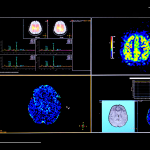As the epidemic enters its third year, healthcare workers throughout the world continue to endure crushing workloads and severe manpower shortages. Meanwhile, patient and consumer healthcare expectations are changing. Future health systems will need to provide more accessible, scalable, and fair care while also contributing to the preservation of the planet’s health. Many IT businesses have devoted their efforts to solving difficulties brought on by the global pandemic. At the same time, many healthcare organisations are focusing on technology and its potential to revolutionise the way their products and services are delivered. The epidemic has clearly pushed the digitalization of the healthcare business. According to the HIMSS Future of Healthcare Report, during the next five years, 80% of healthcare providers aim to expand their investment in technology and digital solutions. From the depths of the crisis, there are indicators that we may be witnessing the start of a new age in healthcare.
Down below are a few technological advancements that may have an influence on healthcare in 2023 and beyond.
High-level AI usage in healthcare
Artificial intelligence is already having an impact on a variety of businesses. The healthcare industry is no exception. In the previous five years, searches for “AI and healthcare” have increased by 733%. Healthcare practitioners are increasingly utilising AI. A lot of the time, it is in the form of augmented intelligence, which is applying artificial intelligence for supportive reasons. To put it another way, the goal is to enhance rather than replace physicians’ expertise.
Global market for AI-assisted medical imaging solutions

Source: www.businesswire.com
Highly skilled professionals spend an excessive amount of time on regular chores that divert their focus away from the patient, which is one of the most significant drivers of stress and burnout in healthcare. Imaging employees at radiology departments, for example, estimate that over 25% of their job is wasteful and might be automated. AI helps to automate such operations, relieving the strain on imaging techs and allowing them to focus on patient care. AI-enabled technologies, particularly in complicated imaging modalities like CT and MR, can make it easier for technicians to plan and perform regular scans, allowing them to get pictures right the first time with more confidence and precision.
Remote Patient Monitoring or virtual care
During the COVID-19 epidemic, when individuals were forced to adhere to mobility limitations and social distance conventions, the idea of remote patient monitoring acquired a lot of traction. During the first months of the epidemic, the percentage of healthcare consultations taken up and conducted remotely increased from 0.1% to 43.5 %. It is frequently advised for discharged patients since it allows doctors to regularly monitor their patients and act on critical data, reducing the number of visits to the doctor and speeding up the healing process. It is gradually becoming the future of providing healthcare services to patients by supplying them with a variety of medical devices such as implants, blood pressure cuffs, sensors, and other gadgets that allow doctors to access real-time patient data for improved treatment. It also serves as a method for doctors to break out from traditional healthcare venues saving time, money and ensuring high-quality care without meeting their patients.
Healthcare services available at locations closer to patients and Telemedicine
Another healthcare technology development providing more equal access to treatment, in addition to providing care to patients in their homes, is the shift from hospital-centric to locally provided care. Patients who formerly had to travel considerable distances for specialised treatment are increasingly able to access these technologies through smaller (and sometimes even mobile) healthcare facilities, for example, local diagnostic hubs, Virtual Care Stations, and even technology-enabled container buildings can provide closer-to-home healthcare, important for those living in rural and underserved areas. Primary care facilities and local clinics may now act as distant hospitals, delivering services such as ultrasound tests to pregnant women; thanks to a mix of virtual specialist assistance and technology such as ultrasound and X-ray imaging. For example, if a patient arrives with a broken leg, a local practitioner can take an X-ray and quickly share it with a distant traumatologist, radiologist, or emergency doctor for virtual consultation — rather than requiring the patient to travel to a large metropolitan hospital. The pandemic has even resulted in the construction of “virtual hospital wards,” in which centralised communication infrastructure is utilised to monitor the care of a large number of patients, all of whom are at home. A more advanced version of this concept may be seen in the “Virtual ER” pilot project being developed at the Pennsylvania Center for Emergency Medicine.
Social distance and stay-at-home orders brought the traditional care delivery paradigm to an end, allowing many healthcare practitioners to embrace telemedicine and virtual patient monitoring. Telemedicine not only makes healthcare more accessible and affordable, but it also boosts patient participation. It is especially useful for wounded, immunocompromised, or distant patients who may now electronically communicate with clinicians over a secure video link. Telemedicine systems have enabled rapid diagnosis, real-time patient insights, and, in some situations, therapy without the need for a doctor’s visit. It will be a game-changer in the healthcare business since it will bring healthcare to the patients’ doorstep, personalised to their specific requirements.
Digital Therapeutics
More healthcare professionals are embracing digital therapeutics (DTx) to give medical care and evidence-based therapeutic interventions directly to patients using high-quality software applications. This enables physicians to make an informed choice on the best remedy for their patients’ difficulties. Because digital data is continuously created and recorded, it also aids in overcoming the issue of non-adherence in chronic illnesses, hence improving treatment outcomes. With 73 million German citizens insured by public health and 24 applications authorised for reimbursement, Germany has established itself as a pioneer in digital health innovation. The country that pioneered DTx has prompted neighbouring countries such as Belgium and France to follow the same path.
Smart wearables and devices
Patients may take a more active part in their health with wearable technologies in healthcare. Wearable technology allows patients to measure things from heart rate to reproductive cycles. This information may also be used by doctors to create personalised treatment strategies. There are smart inhalers, smart hearing aids, sleep bands, bio patches, and other smart gadgets in the market, in addition to fitness bands and smartwatches. Furthermore, wearable data collection is more systematic and accurate in gathering all of the patient’s medical information and vitals.
Aiming for good mental health and emotional well-being
Long-standing issues with mental health and emotional well-being have been worsened by the epidemic. Indeed, according to recent research conducted by the American Psychiatric Association, one-quarter of Americans made a new year’s resolve to better their mental health in 2023. The importance of mental health is equivalent to that of physical health. As a result of the ongoing pandemic, many individuals are suffering from mental health difficulties. Fear, worry, greater workload, a desire for human connection, job security worries, financial problems, and so on are examples. Supporting the mental health of workers, customers, and the general public should be a top focus for businesses all over the world. As working from home grows more prevalent and our lives become more intertwined than ever, we should place a larger emphasis on mental health alongside physical health and wellness in the next year. Individuals, companies, and communities should benefit from this.
Conclusion
The healthcare business in the United States is projected to be worth $808 billion dollars. This year, it is likely to cross $10 trillion globally. Artificial Intelligence (AI), Automation, Telemedicine, e-Rx, and cloud computing are all being used in the healthcare business as it evolves. Health-tech companies are redrawing the healthcare landscape with the incorporation of these new-age technologies. As a result of these evolving trends and rapid digital transformation, doctors and practitioners are expected to lead the way to better care management and improved patient outcomes.
Reference
- https://www.forbes.com/sites/bernardmarr/2022/01/10/the-five-biggest-healthcare-tech-trends-in-2022/?sh=7305bcdf54d0
- https://www.philips.com/a-w/about/news/archive/features/2022/20220120-10-healthcare-technology-trends-for-2022.html
- https://www.financialexpress.com/healthcare/healthtech/top-health-tech-trends-to-predict-in-2022/2391908/
- https://www.capgemini.com/2022/01/2022-key-trends-in-healthcare/
- https://www.healthcaredive.com/news/healthcare-trends-of-2022/618018/
https://psychcentral.com/health/mental-health-trends-to-watch-in-2022






